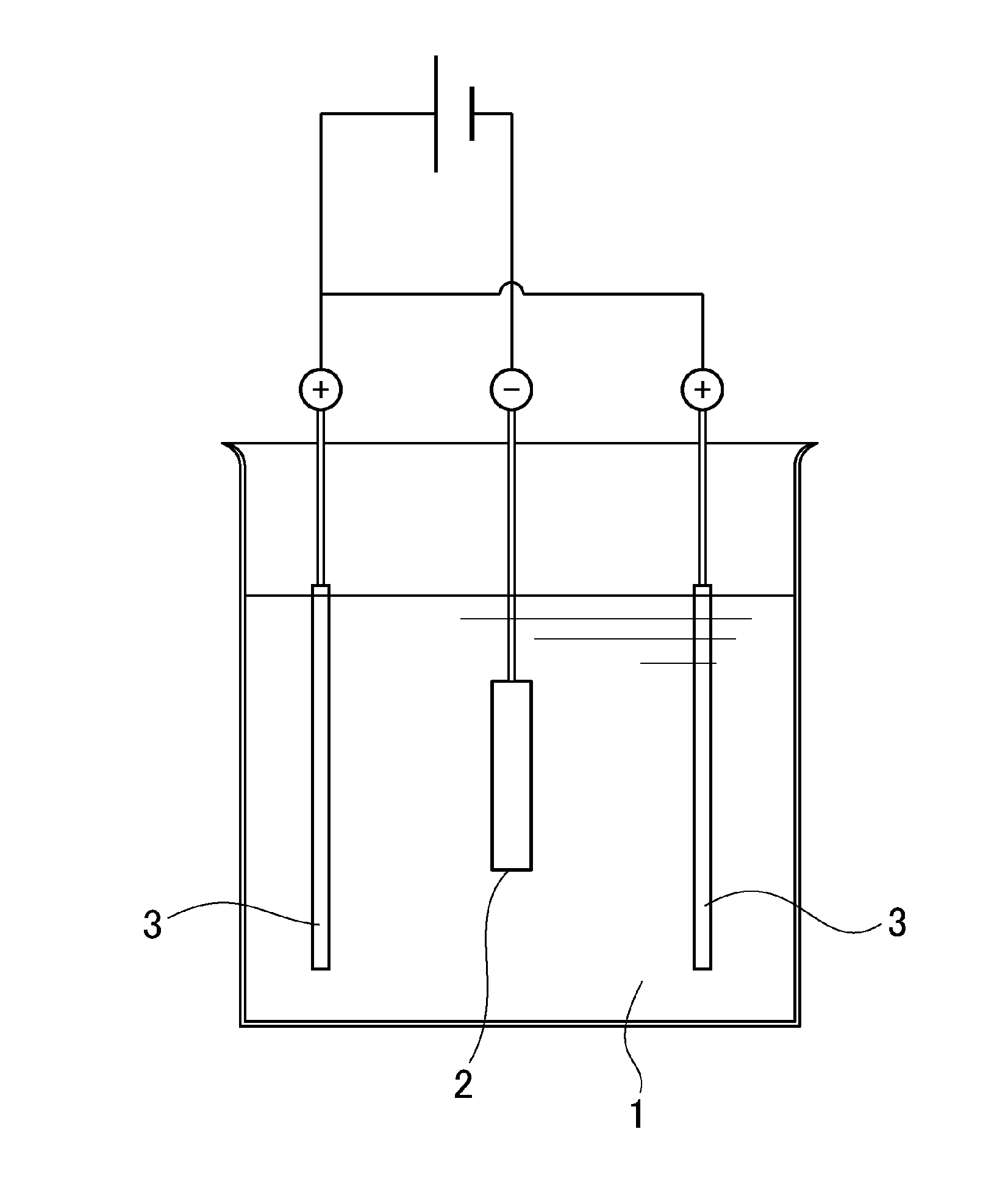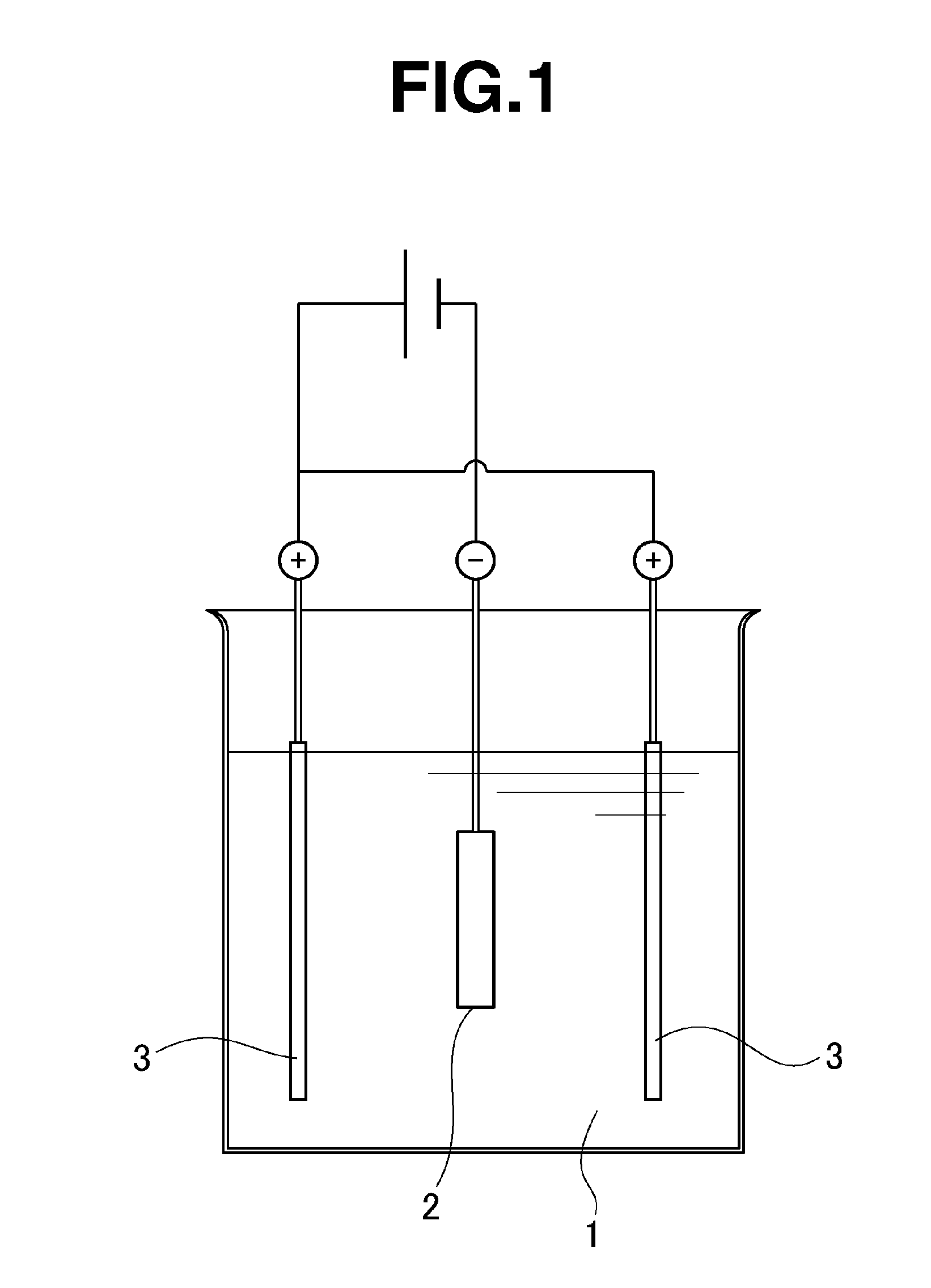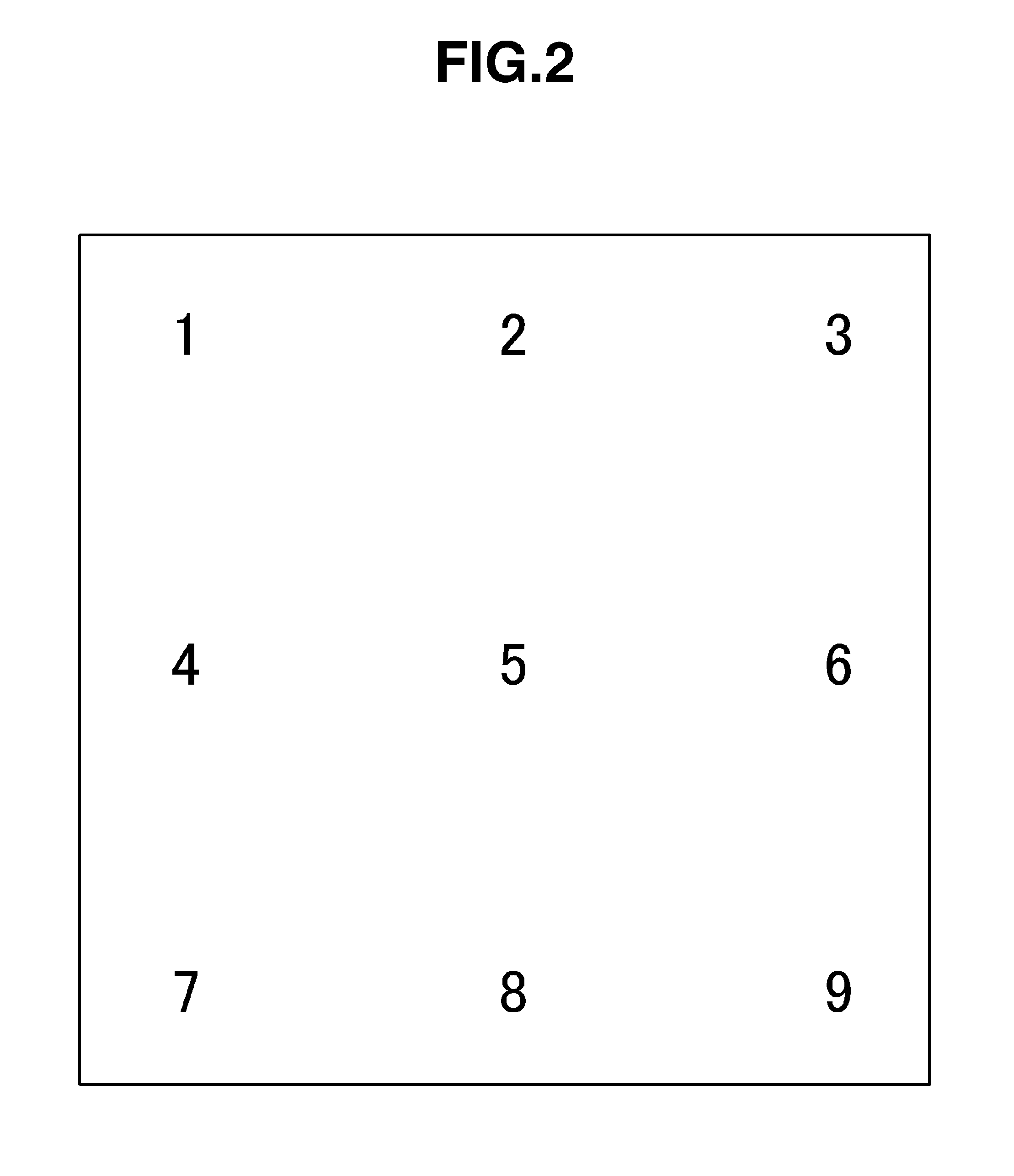Production method for rare earth permanent magnet
a production method and permanent magnet technology, applied in the direction of magnetic materials, electrophoretic coatings, magnetic bodies, etc., can solve the problems of unavoidable loss of remanence, permanent magnets within the rotary machine exposed to elevated temperature, and the above method suffers from some problems, so as to achieve high remanence
- Summary
- Abstract
- Description
- Claims
- Application Information
AI Technical Summary
Benefits of technology
Problems solved by technology
Method used
Image
Examples
example 1
[0055]An alloy in thin plate form was prepared by a strip casting technique, specifically by weighing Nd, Al, Fe and Cu metals having a purity of at least 99% by weight, Si having a purity of 99.99% by weight, and ferroboron, high-frequency heating in an argon atmosphere for melting, and casting the alloy melt on a copper single roll. The alloy consisted of 14.5 atom % of Nd, 0.2 atom % of Cu, 6.2 atom % of B, 1.0 atom % of Al, 1.0 atom % of Si, and the balance of Fe. Hydrogen decrepitation was carried out by exposing the alloy to 0.11 MPa of hydrogen at room temperature to occlude hydrogen and then heating at 500° C. for partial dehydriding while evacuating to vacuum. The decrepitated alloy was cooled and sieved, yielding a coarse powder under 50 mesh.
[0056]Subsequently, the coarse powder was finely pulverized on a jet mill using high-pressure nitrogen gas into a fine powder having a mass median particle diameter of 5 μm. The fine powder was compacted in a nitrogen atmosphere under...
reference example 1
[0067]An alloy in thin plate form was prepared by a strip casting technique, specifically by weighing Nd, Al, Fe and Cu metals having a purity of at least 99% by weight, Si having a purity of 99.99% by weight, and ferroboron, high-frequency heating in an argon atmosphere for melting, and casting the alloy melt on a copper single roll. The alloy consisted of 14.5 atom % of Nd, 0.2 atom % of Cu, 6.2 atom % of B, 1.0 atom % of Al, 1.0 atom % of Si, and the balance of Fe. Hydrogen decrepitation was carried out by exposing the alloy to 0.11 MPa of hydrogen at room temperature to occlude hydrogen and then heating at 500° C. for partial dehydriding while evacuating to vacuum. The decrepitated alloy was cooled and sieved, yielding a coarse powder under 50 mesh.
[0068]Subsequently, the coarse powder was finely pulverized on a jet mill using high-pressure nitrogen gas into a fine powder having a mass median particle diameter of 5 μm. The fine powder was compacted in a nitrogen atmosphere under...
reference example 2
[0072]As in Reference Example 1, a magnet body having dimensions of 17 mm×17 mm×2 mm (magnetic anisotropy direction) was prepared.
[0073]Also, terbium fluoride (TbF3) having an average particle size of 4 μm was thoroughly mixed with ethanol at a weight fraction of 40% to form a slurry having terbium fluoride particles dispersed therein. The slurry served as an electrodepositing bath.
[0074]Using the slurry, a thin coating of terbium fluoride particles was formed on the magnet body surface as in Reference Example 1. The area density of terbium fluoride deposited was 100 μg / mm2 on the magnet body surface.
[0075]As in Reference Example 1, the coating thickness and coercive force were measured to examine their distribution. The results are reported in Tables 1 and 2. As seen from Tables 1 and 2, the coating thickness was 220 μm at maximum and 130 μm at minimum, and the coercive force was increased by 720 kA / m at maximum and 590 kA / m at minimum.
PUM
| Property | Measurement | Unit |
|---|---|---|
| particle size | aaaaa | aaaaa |
| volume fraction | aaaaa | aaaaa |
| size | aaaaa | aaaaa |
Abstract
Description
Claims
Application Information
 Login to View More
Login to View More - R&D
- Intellectual Property
- Life Sciences
- Materials
- Tech Scout
- Unparalleled Data Quality
- Higher Quality Content
- 60% Fewer Hallucinations
Browse by: Latest US Patents, China's latest patents, Technical Efficacy Thesaurus, Application Domain, Technology Topic, Popular Technical Reports.
© 2025 PatSnap. All rights reserved.Legal|Privacy policy|Modern Slavery Act Transparency Statement|Sitemap|About US| Contact US: help@patsnap.com



